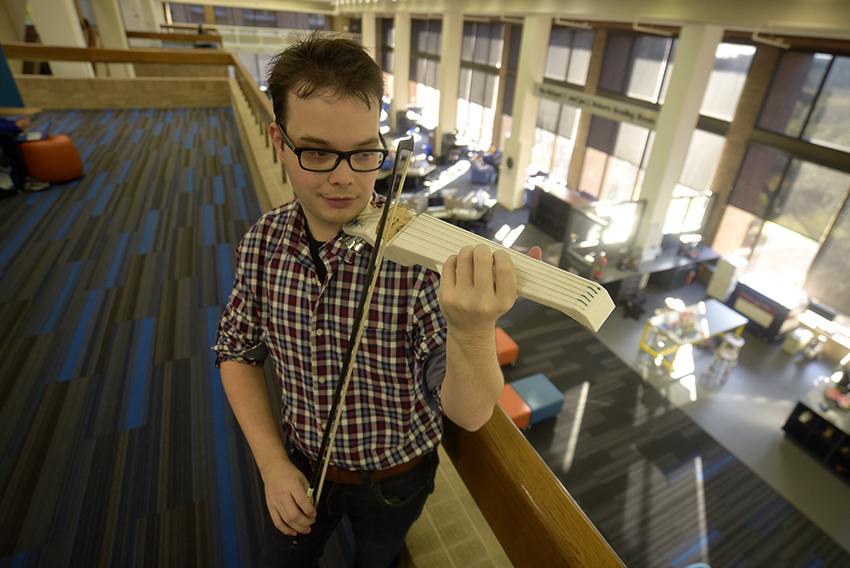The rush of sound from the composition “Dharma at Big Sur” is, for violinist Sean Riley, like the coastal waves it was inspired by. The music performance graduate student was determined to play it. The only problem — it wasn’t written for his 240-year-old acoustic violin, but a six-string electric.
On his way to check out the piece of music, Riley laid eyes on the 3-D printers in the Fine Arts Library and it all clicked for him. In order to play this piece, he decided to design and 3-D print a six-string electric violin in the Foundry’s makerspace in the library. A year later, Riley now plans to perform the piece on that violin for the public on Feb. 22, during his first doctoral recital.
“This is not a violin, it’s a beast,” Riley said. “Six-string violins aren’t rare, they exist, but they’re not played by classical musicians, and they are very expensive. I didn’t have too many options. The idea of getting to make something was more than just the music.”
Riley received $2,500 from the Rainwater Innovation Grant which helped him pay mechanical engineer Daniel Goodwin and studio art senior Rebecca Milton to help him craft the violin.
“We have this image of the artist as this lonely person, but that is not the model of art today,” said Mary Poole, director of the Butler School of Music. “The fact that all of these people came together to create something that actually sounds fantastic was the best example of art-making.”
The violin became a canvas for Milton, as she sculpted a row of bones cast in porcelain perched at the end of Riley’s fingerboard, which gave the instrument a wave silhouette.
“Sean said he didn’t want it to look like a typical violin,” Milton said. “I said we could use porcelain as the material, and that really stuck out to him. I think that made him feel like it would be a very spectacular object that he would be proud to play on.”
After everything, the violin only cost $730, making it cheap and accessible to musicians who want to push themselves into a new area in the industry, Riley said.
“This is something new you can explore and possibly something you can innovate with,” Riley said. “The project isn’t done, it’s just starting. It’s just the beginning. We’ve done the work for making it, and now we get to start playing it.”





















